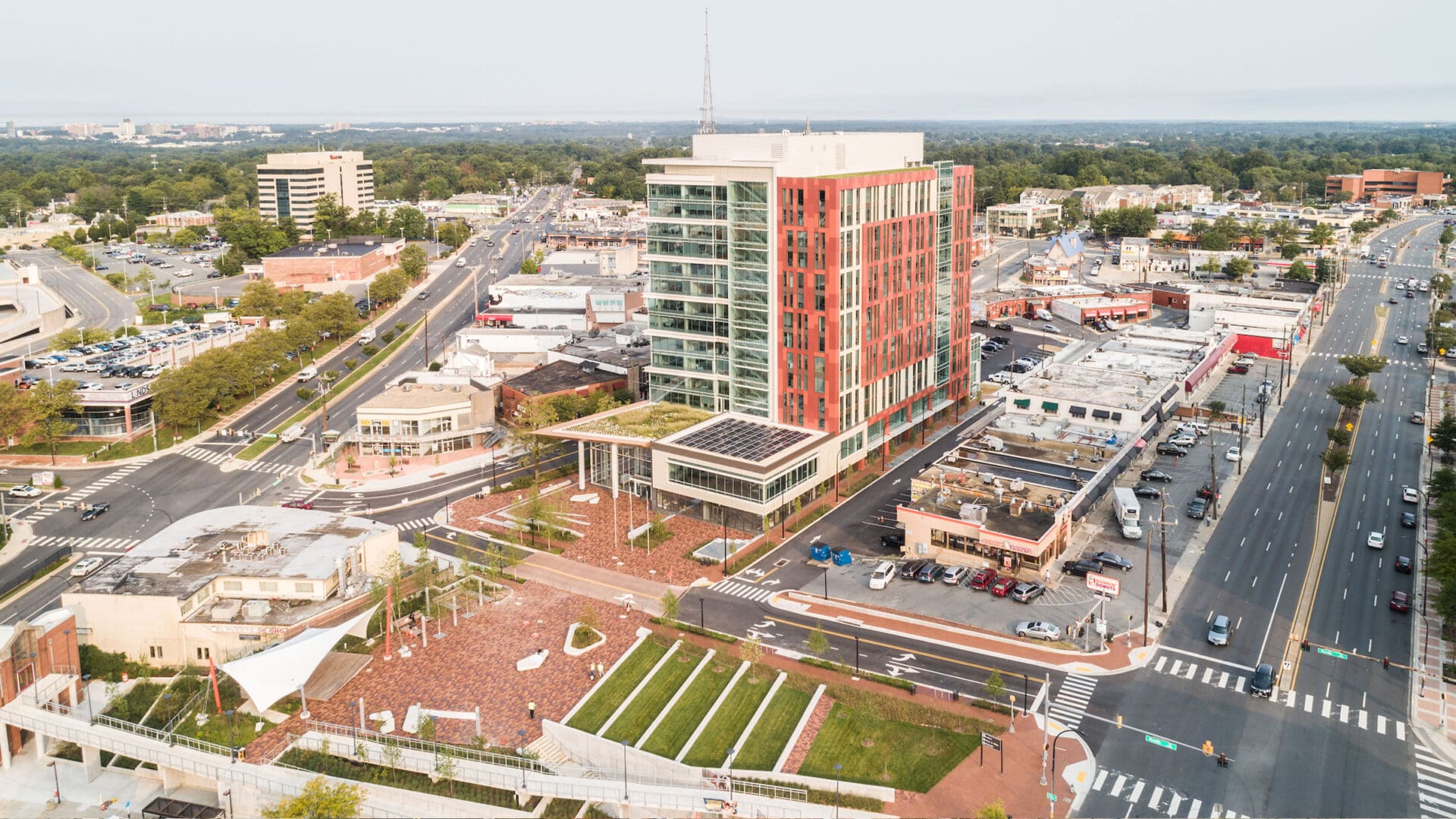Principal Laura Morder recently represented GHT at the Montgomery County Energy Summit. For ten years, the Montgomery County Department of Environmental Protection has hosted this event to share trends and continuing education sessions with sustainability professionals throughout the DMV area. Focused on preparing the commercial building community for compliance with County energy regulations, this year’s Summit addressed topics such as benchmarking, electric vehicle charging, and energy management tools for commercial buildings.
In the opening remarks for the program, the County shared their future sustainability goals, including the elimination of greenhouse gas (GHG) emissions by 2035 and the achievement of net zero energy for all new commercial buildings by 2045. This past year, the County contributed $10M to the Montgomery County Green Bank for new projects, 20% of which will contribute to equitable projects in disadvantaged communities. In addition to their goals for the coming years, the County focused on sustainable trends in the green building space, such as energy management, commissioning, benchmarking, BEPS, and electric vehicle (EV) charging.
Tools for Energy Management
In a recent case study on energy management across a college campus, an owner revealed how tools like ENERGYCAP, Tableau, Microsoft AI, and Microsoft Excel, helped the campus track energy consumption using reports and data management. This campus exemplifies the trend of moving towards one building automation system (BAS) vendor to analyze the energy consumption trends of an entire campus with one BAS platform and multiple analytical tools. The owner was able to optimize operational schedules, pin point equipment failures and share central plant performance metrics with staff and students.
Harnessing Data and Ongoing Commissioning
Focusing on two local case studies, Siemens presented a monitoring-based commissioning approach to target specific energy conservation measures (ECMs) using trend data from a building automation system. This process involved an investigation of ongoing issues, analysis of trend data from the building automation system, and implementation of changes and training to work towards energy reduction goals. Ultimately, Siemens reported that monitoring-based commissioning can result in a 5-20% site EUI reduction. For the case study discussed, Siemens reported approximately 60-70% of the improvement upgrade costs were covered by EmPower Maryland program incentives.
Montgomery County Benchmarking and Maryland BEPS
Commercial buildings in Montgomery County, MD greater than 50k SF have been benchmarking since 2016 and will soon be joined by 25-50k SF commercial and >250k SF multi-family properties this June, with 25k-250k SF multi-family properties to follow soon after. Buildings in Montgomery County will conduct three years of benchmarking, followed by a five-year Building Energy Performance Standards (BEPS) compliance cycle. The Montgomery County BEPS program will reflect net site EUI reduction and account for renewable energy allowance. If a property is unable to meet the BEPS target, a Building Performance Improvement Plan (BPIP) will be created. For more information on the Montgomery County BEPS program, click here.
Separately, the state of Maryland passed a Building Performance Standard in April 2022 for commercial buildings 35k SF and larger. The state BPS will require a 20% reduction in net direct site emissions which focuses on the elimination of site combustion from fuel sources like natural gas, propane, and fuel oil. For more information on the Maryland Department of Environment BEPS program, click here.
Electric Vehicle (EV) Charging
There are three levels of electric vehicle (EV) charging. Level 1 is intended for local travelers driving approximately 30-40 miles a day. This level requires a 120 V connection and offers a 5 miles/1 hour charge time. Level 2 is typically installed in mixed-use communities and intended for 4–6-hour charge times. This level requires a 208-240V connection and offers 25 miles/1 hour charge time. Level 3 is intended for drivers who require a fast, full battery charge in less than four hours and is most expensive to design due to the requirement for a 480V power connection. If you are interested in installing EV charging stations at your project, financing is available from the Montgomery County Green Bank, Maryland Energy Administration, PEPCO evSMART program, and the US Federal Tax Credit.
If you are a building owner or operator in Montgomery County and are interested in optimizing your building’s performance to align with current County initiatives and regulations, contact GHT’s Operations & Energy Services Studio at [email protected] or 703.243.1200.
